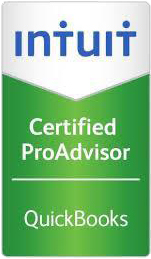Cash flow is the lifeblood of every small business but many business owners underestimate just how vital managing cash flow is to their business’s success. In fact, a healthy cash flow is more important than your business’s ability to deliver its goods and services.
While that might seem counterintuitive, consider this: if you fail to satisfy a customer and lose that customer’s business, you can always work harder to please the next customer. If you fail to have enough cash to pay your suppliers, creditors, or employees, you are out of business.
What is Cash Flow?
Cash flow, simply defined, is the movement of money in and out of your business; these movements are called inflow and outflow. Inflows for your business primarily come from the sale of goods or services to your customers but keep in mind that inflow only occurs when you make a cash sale or collect on receivables. It is the cash that counts! Other examples of cash inflows are borrowed funds, income derived from sales of assets, and investment income from interest.
Outflows for your business are generally the result of paying expenses. Examples of cash outflows include paying employee wages, purchasing inventory or raw materials, purchasing fixed assets, operating costs, paying back loans, and paying taxes.
A tax and accounting professional is the best person to help you learn how your cash flow statement works. He or she can prepare your cash flow statement and explain where the numbers come from. If you need help, don’t hesitate to call.
Cash Flow versus Profit
While they might seem similar, profit and cash flow are two entirely different concepts, each with entirely different results. The concept of profit is somewhat broad and only looks at income and expenses over a certain period, say a fiscal quarter. Profit is a useful figure for calculating your taxes and reporting to the IRS.
Cash flow, on the other hand, is a more dynamic tool focusing on the day-to-day operations of a business owner. It is concerned with the movement of money in and out of a business. But more important, it is concerned with the times at which the movement of the money takes place.
In theory, even profitable companies can go bankrupt. It would take a lot of negligence and total disregard for cash flow, but it is possible. Consider how the difference between profit and cash flow relate to your business.
Example: If your retail business bought a $1,000 item and turned around to sell it for $2,000, then you have made a $1,000 profit. But what if the buyer of the item is slow to pay his or her bill, and six months pass before you collect on the account? Your retail business may still show a profit, but what about the bills it has to pay during that six-month period? You may not have the cash to pay the bills despite the profits you earned on the sale. Furthermore, this cash flow gap may cause you to miss other profit opportunities, damage your credit rating, and force you to take out loans and create debt. If this mistake is repeated enough times, you may go bankrupt.
Analyzing your Cash Flow
The sooner you learn how to manage your cash flow, the better your chances of survival. Furthermore, you will be able to protect your company’s short-term reputation as well as position it for long-term success.
The first step toward taking control of your company’s cash flow is to analyze the components that affect the timing of your cash inflows and outflows. A thorough analysis of these components will reveal problem areas that lead to cash flow gaps in your business. Narrowing, or even closing, these gaps is the key to cash flow management.
Some of the most important components to examine are:
- Accounts receivable. Accounts receivable represent sales that have not yet been collected in the form of cash. An accounts receivable balance sheet is created when you sell something to a customer in return for his or her promise to pay at a later date. The longer it takes for your customers to pay on their accounts, the more negative the effect on your cash flow.
- Credit terms. Credit terms are the time limits you set for your customers’ promise to pay for their purchases. Credit terms affect the timing of your cash inflows. A simple way to improve cash flow is to get customers to pay their bills more quickly.
- Credit policy. A credit policy is the blueprint you use when deciding to extend credit to a customer. The correct credit policy – neither too strict nor too generous – is crucial for a healthy cash flow.
- Inventory. Inventory describes the extra merchandise or supplies your business keeps on hand to meet the demands of customers. An excessive amount of inventory hurts your cash flow by using up money that could be used for other cash outflows. Too many business owners buy inventory based on hopes and dreams instead of what they can realistically sell. Keep your inventory as low as possible.
- Accounts payable and cash flow. Accounts payable are amounts you owe to your suppliers that are payable at some point in the near future – “near” meaning 30 to 90 days. Without payables and trade credit, you’d have to pay for all goods and services at the time you purchase them. For optimum cash flow management, examine your payables schedule.
Some cash flow gaps are created intentionally. For example, a business may purchase extra inventory to take advantage of quantity discounts, accelerate cash outflows to take advantage of significant trade discounts or spend extra cash to expand its line of business.
For other businesses, cash flow gaps are unavoidable. Take, for example, a company that experiences seasonal fluctuations in its line of business. This business may normally have cash flow gaps during its slow season and then later fill the gaps with cash surpluses from the peak part of its season. Cash flow gaps are often filled by external financing sources. Revolving lines of credit, bank loans, and trade credit are just a few of the external financing options available that you may want to discuss with us.
Monitoring and managing your cash flow is important for the vitality of your business. The first signs of financial woe appear in your cash flow statement, giving you time to recognize a forthcoming problem and plan a strategy to deal with it. Furthermore, with periodic cash flow analysis, you can head off those unpleasant financial glitches by recognizing which aspects of your business have the potential to cause cash flow gaps.
Need Help?
Without adequate funds to cover day-to-day expenses, your business could fail. Why take that chance? If you need help analyzing and managing your cash flow more effectively, please call and speak to a tax professional who can help.




